
|
Feedback Form

ROAMER DESIGN COMPETITION
Key Stage 1
 On
June 10, schools from around Britain converged on The Science Museum,
London, to take part in the finals of the Roamer Design Competition. This
issue of GO looks at the Key Stage 1 finalists.
On
June 10, schools from around Britain converged on The Science Museum,
London, to take part in the finals of the Roamer Design Competition. This
issue of GO looks at the Key Stage 1 finalists.
The children set up displays showing the development of the Roamer design and supported it with other aspects of the topic thus putting the design work into a context.
The judges, Professor Heinz Wolff and Mr David Catlin, Managing Director of Valiant, were very impressed with the standard of the work and the wide variety of materials and techniques used. Heinz Wolff summed up the competition, "I was very impressed by the way Roamer stimulated the creativity and imagination of the children. It proved to be a focus for many constructional techniques. By combining IT and the problems of choice of materials and construction, Roamer acts as an excellent introduction to engineering design problems".
 |
Martin Perch, James Shurrock, Lisa Hampshar, and Leah Weldon of Tweseldown Infant School, Church Crookham, are fans of Postman Pat. He served as the inspiration for the development of their own Postman called Frank (so called because of the process of franking letters). Frank was an ingenuous design which comprised a shelf held above the Roamer with a clothes peg suspended above it. In the children's own words, "It was hard to get the peg to stay on. Now we can send the Roamer to someone who can take their letter off the shelf. We wanted it to be automatic but that was too hard"! |
| "Elephants" served as a focus for some interesting cross-curricular work by Imran, Tyrone, Imtiaz and Adal from Westminster Infants School, Handsworth. During the course of their investigations they discovered that Imran is as tall as a baby elephant: 127 cms! Once Roamer had been changed into an elephant by the application of grey cloth and tubing the children developed a board game (in the shape of Africa) where they had to help the elephant escape from the hunters. |  |
 |
Jackie Horsburgh, from Echline Primary School, West Lothian, tape-recorded the development of the design brief that resulted in Robbie Pick Roamer Robot. The children, Christopher Reid, Lynn Robertson, Struan Horsburgh and Colin Wylie discussed what attributes their robot ought to have to make him thoroughly useful as robots should be. Sketches were drawn and refined before Robbie was made. The result was a silver robot that had pulleys and containers and could be programmed to take things where you wanted them. The final display also included a well documented record book that showed how all aspects of the topic fitted into the Scottish National Curriculum, proving that not only did the children gain a great deal of enjoyment from the creation of a Roamer character, but that it was also very educational. |
| The pre-school club Computer Kids provided the youngest finalists in the competition. At 3 and 4 years old Adam Jones, Hilbre Stafford and Francis Roberts showed that age is no bar to the development of creativity and computer proficiency. The children were captured on video researching and developing their butterfly design. Computer aided design and papier mache were the key components of their extravagant robot butterfly. To support the project Dr April Jones, their teacher, also created other Roamer characters depicting the progression of the butterfly from pupa to fully fledged adult. |  |

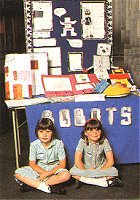
 |
MELTON CP SCHOOL,
|
 The first prize at Key Stage
1 was awarded to Katie Fisk and Joanne Talley from Melton CP School. The
girls developed a design project that refelcted the work they were doing
on electricity and yet incorporated new ideas and creativity.
The first prize at Key Stage
1 was awarded to Katie Fisk and Joanne Talley from Melton CP School. The
girls developed a design project that refelcted the work they were doing
on electricity and yet incorporated new ideas and creativity. 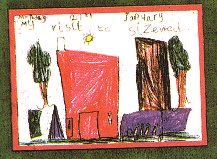
Class 3 at Melton CP School, Suffolk were doing a project on electricity. This involved many cross-curricular activities which were displayed in their exhibition. A class trip to Sizewell was documented in an illustrated diary, here the children learnt about the production of electricity from nuclear sources. The children checked their own homes for electric appliances and uses for electricity, and were amazed at how much electricity they do use in their lives. Through experimental work the pupils learnt to make circuits and discovered which materials are better conductors than others.
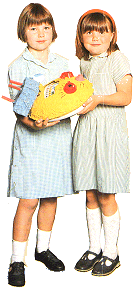
The pupils decided that a future use of electricity would be to power robots, so designed some robots using everyday materials. Katie Fisk and Joanne Talley thought that a useful robot would be a "socket sniffer". Too often sockets are hidden behind furniture and are difficult to find. A robot that would search out a socket for you would be, they decided, a very useful household appliance of the future. Having established the need, they then produced some rough ideas before electing their working design. They then decided on the materials to make it from. Having established from their previous experimental work that paper is a non-conductor, this seemed a safe, practical and sensible medium to work in.
Using a Roamer jacket as a base, Katie and Joanne used papier mache to form body of the "socket sniffer ", a plug was made from a cardboard box and foam sticks. The whole robot was made more appealing through the addition of a friendly face.
Once the robot had been constructed it had to be tested. On a plan of the classroom, Katie and Joanne worked out a route to the nearest socket and programmed the Roamer to find it. Trial and error led to the definitive set of commands. Their socket sniffer had sniffed out a socket!
The judges were particularly impressed by the way Design & Technology had been incorporated into cross-curricular topic work and the creativity and imagination that Katie and Joanne had shown in their work. They had also considered practical issues and made full use of Roamer's movement capability.
Katie and Joanne won £1,000 for the school. Mrs Blanchard, their teacher was delighted by their success and felt that it would encourage other pupils to recognise the value of technology and the design process.
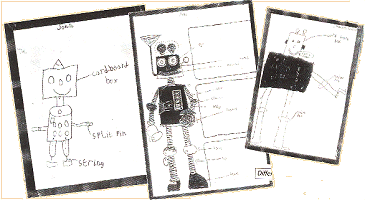 Different robot designs |
|
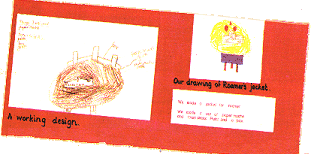 Katie and Joanne documented the design process |
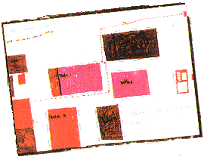 Testing their design: Joanne and Katie worked out the Roamer's route |

 |
YENTON INFANT SCHOOL,
|
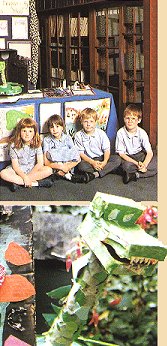
 The
second prize at Key Stage 1 was awarded to Aidan Thompson, Katie Glaze,
Charlotte Richards and Adam Jarenko. Here their teacher, Miss Alison Messenger
documents the development of the design.
The
second prize at Key Stage 1 was awarded to Aidan Thompson, Katie Glaze,
Charlotte Richards and Adam Jarenko. Here their teacher, Miss Alison Messenger
documents the development of the design.
The children and I decided that they should design a "Roamer Dragon". I had suggested that, as the next half term was so short and we were in the middle of SATs, we would do a project on "Dragons" after Easter to stimulate work for their writing SATs (Eng 3,4 and 5). The children thought they could design a dragon for us to use during this topic. (I also used this exercise to teacher assess their CDT skills at level 2 and 3.)
Initially the group was set the task of designing their own Roamer dragons and the designs varied considerably. Then they were brought together as a group to consider their designs and decide which design should be used; or which parts of each design could be amalgamated. They eventually decided to use Katie's basic design and add on extra details, such as wings. Katie and Charlotte continued to modify the plans whilst Aidan and Adam drew up a list of equipment needed. Aidan also went home and redrew the dragon and his cave.
The children worked together to produce the dragon. They had no teacher help with making the model, although I did make some suggestions as to possible equipment, and help with deciding who did which bits.
Whilst this group of children were making the dragon, many other children became interested and started to bring in dragon books and models - even though we had not yet started the project. After the dragon was finished the group took him around to other classes to see what other children thought of him and to explain to other members of staff. Then they each wrote an evaluation of the project.
The children decided that the dragon needed somewhere to live and so designed and constructed a cave for him.
Overall I thought that the children enjoyed this project enormously and it has created much interest among the rest of the class. We decided to call our Dragon "Puff".
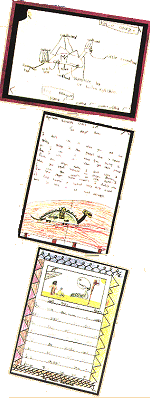 The basic design Evaluations Dragons in Legend |
 Puff in his cave |
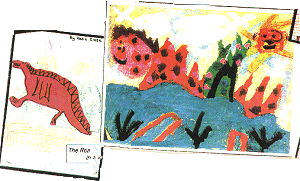 The Roamer dragon inspired artwork in a variety of mediums |
| Back |
|---|